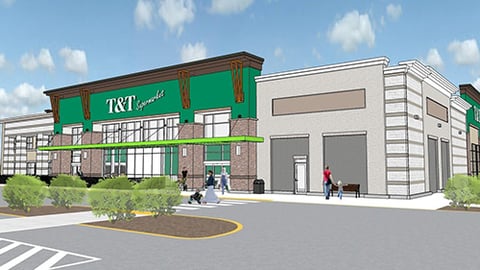America’s Obsession With Costco Continues
Cash-strapped consumers continue to flock to Costco clubs for all of their household needs, as evidenced in the company’s third-quarter financial results.
For the period ended May 12, Costco Wholesale Corp. reported net income of $1.68 billion, or $3.78 per diluted share, up from $1.3 billion and $2.93 per diluted share last year.
Net sales for Q3 were $57.39 billion, a 9.1% jump from $52.6 billion in the third quarter of last year. Total company comp sales were 6.6%, or 6.5% adjusted for gas inflation and foreign exchange. Specifically in the United States, comp sales were 6.2%, or 6% adjusted for gas inflation and foreign exchange.
Shopping frequency increased 5.5% in the United States, while average transaction or ticket remained relatively flat, at 0.7%.
Nonfoods had the highest comps of Costco's core categories.
“As inflation has leveled off, our members are returning to purchasing more discretionary items,” said Gary Millerchip, EVP, CFO, during Costco’s earnings call, his first since joining the company in March. “And growth in the category was led by toys, tires, lawn and garden, and health and beauty aids. Bakery sales also showed great momentum in the quarter as our fresh foods team has reinvented that department with a number of new and exciting items, including the Kirkland Signature lemon blueberry loaf and morning buns.
“Within our ancillary businesses, the food court had the strongest quarterly sales, with continued success as the chocolate chip cookie was added to the food court this year,” continued Millerchip.
Digging Into Digital
Digital delivered solid results for Costco in Q3. E-commerce comp sales grew 20.7% on a reported basis and adjusted for foreign exchange. Total e-commerce sales growth in the quarter was led by gold and silver bullions, gift cards, and appliances.
App downloads were up 32% versus a year ago, with about 2.5 million new downloads in the quarter, bringing total downloads to more than 35 million. Site traffic was up 16%, and average order value was up 8%. Costco continues to make enhancements to its app and website.
The retailer also recently expanded its relationship with San Francisco-based Uber. Previously, Uber Eats delivered Costco orders only in Texas. With this new agreement, consumers can order from Costco through Uber Eats across all of Canada, as well as 17 U.S. states. Costco is also working to expand this partnership to several international countries in the coming months. In addition to the increased access to Uber Eats customers, the expanded agreement will allow Costco to sell Uber gift cards globally and offer discounted Uber One annual membership to Costco members.
[RELATED: Uber Stresses ‘Togetherness’ in New Product Rollouts]
Membership
Speaking of membership, Costco reported that its Q3 membership fee income was $1.123 billion, an increase of $79 million, or 7.6% year over year. In terms of renewal rates, the U.S. and Canada renewal rate was 93%, up one-tenth of a percent from Q2 end.
There was still no word on when Costco will raise its membership fee. “We're still evaluating those considerations to determine what the right timing is and when we reach that point where we feel it is the right time, of course we'll be very open and direct and communicating that,” said Millerchip.
Expansion
Regarding capital expenditures, Q3 spend was approximately $1.06 billion, and the company estimates full year '24 capital expenditure will be between $4.3 billion and $4.5 billion.
During Q3, Costco opened two new warehouses, both in the United States. Additionally, since the end of Q3, it has opened two more: one in Loomis, Calif., and one in Nanjing, China. For the remainder of fiscal '24, Costco plans to open another 12 new locations: nine in the United States, two in Japan and one in Korea.
This would bring the total for the full year to 30 openings, including one relocation, for a net of 29 new warehouses.
Prices Top of Mind
As with many retailers, price remains top of mind for Costco.
“Our buying teams are constantly aware of changing costs across all of their SKUs and are ensuring that we're capturing all cost decreases quickly so that we can pass on incremental value through price reductions,” explained Millerchip. “If we are unsuccessful in delivering ultimate value with branded goods, we evaluate the potential for new high-quality Kirkland Signature items with a goal of providing at least 20% value versus what we would sell the national brand item as.”
During its recent quarter, Costco reduced prices on a number of existing items, including lowering Kirkland Signature pine nuts from 29.99 to 24.99, and reducing the price of Kirkland Signature frozen shrimp SKUs by $1.
Millerchip also cleared up some recent media speculation regarding the food court’s hot dog: “I also want to confirm the $1.50 hot dog price is safe.”
In addition, President and CEO Ron Vachris chimed in on how Costco does a really good job of triggering impulse purchases – the instances where members are trusting the company's buyers and adding a few additional items to their cart.
“You've heard the phrase -- people come in to spend $100 and walk out with $300,” he said. “That's because our buyers and our operators do a great job in making the warehouses exciting.”
Issaquah, Wash.-based Costco currently operates more than 870 warehouses, including 600-plus in the United States and Puerto Rico and 108 in Canada, and is No. 3 on The PG 100, Progressive Grocer’s 2024 list of the top food and consumables retailers in North America. PG also named Costco among its Retailers of the Century.











